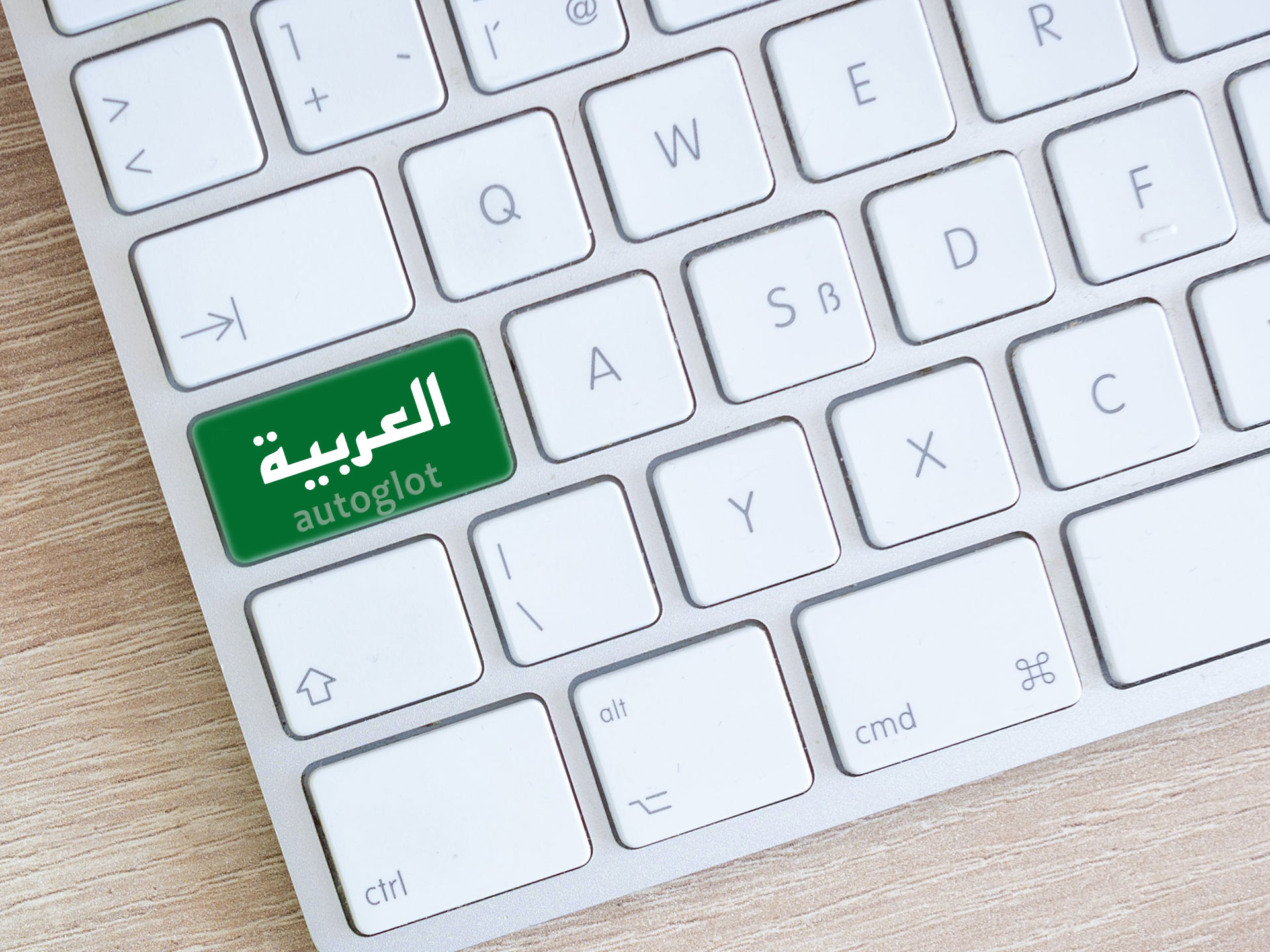
As businesses and individuals strive to expand their online presence, reaching a global audience becomes paramount. This expansion goes beyond geographical boundaries, tapping into diverse linguistic markets. The benefits of maintaining a multilingual website extend far beyond mere accessibility.
Here is a glimpse into why businesses, bloggers, and website owners are recognizing the advantages of translating their websites to Arabic.
Multilingual Websites and Translation to Arabic Language
- Firstly, a multilingual website enhances user experience, breaking down language barriers and making content more inclusive. Visitors are more likely to engage with a website that speaks their language, fostering a sense of connection and trust. This, in turn, can lead to increased time spent on the site and higher conversion rates.
- Secondly, from a business perspective, multilingualism opens doors to new markets and demographics. By catering to the linguistic preferences of a global audience, businesses can tap into previously untapped markets, gaining a competitive edge in an increasingly globalized economy.
- Moreover, search engines favor multilingual websites, considering them more relevant and user-friendly. This boosts the website’s visibility and search engine rankings, driving organic traffic from diverse linguistic regions.
For bloggers and content creators, a multilingual approach means expanding the reach of their ideas and stories. It enables them to connect with a broader audience, fostering a sense of community that transcends linguistic boundaries.
The benefits of having a multilingual website are multifaceted, encompassing improved user experience, expanded market reach, enhanced search engine visibility, and increased engagement.
Arabic Language: Unlocking the Beauty of Arabic Communication
Arabic, a language steeped in history and rich cultural significance, stands as one of the most fascinating and widely spoken languages in the world. With roots dating back to the 6th century, Arabic has evolved into a language of immense beauty, complexity, and influence.

Basic Information about Arabic Language
Arabic belongs to the Afro-Asiatic language family and is the official language of 22 countries. It is the liturgical language of Islam and holds a prominent place in religious and cultural contexts. Arabic is known for its elegant script, which is read from right to left, adding to its distinctiveness.
History of Arabic Language
The history of Arabic is a tapestry woven with the threads of ancient civilizations. Its roots can be traced to the Arabian Peninsula, where it evolved over centuries, influenced by various cultures and civilizations. From the poetic verses of pre-Islamic times to the scientific and literary contributions during the Islamic Golden Age, Arabic has been a conduit for the expression of profound thoughts and ideas.
Learning and Understanding Arabic
While the perception of Arabic as a difficult language to learn exists, it’s important to note that proficiency comes with practice and dedication. Numerous resources, both traditional and online, cater to those seeking to learn Arabic, making it more accessible than ever. With its unique script and sounds, mastering Arabic offers a rewarding linguistic journey for language enthusiasts.
Structure, Vocabulary, and Grammar of Arabic
- Arabic’s linguistic structure is built around a root system, where words are formed from three-letter roots. This system contributes to the language’s eloquence and depth.
- Arabic vocabulary is vast, and its grammar, while initially challenging for learners, follows consistent rules that govern sentence construction and verb conjugation.
Arabic presents itself as a linguistic gem, captivating learners with its historical depth, cultural resonance, and linguistic intricacies. Arabic’s influence extends beyond its native speakers, making it a key player in the global linguistic tapestry.
Arabic-speaking People: A Global Tapestry of Arabic Communication
Arabic, with its deep historical roots and cultural significance, serves as a unifying thread among diverse communities worldwide. Understanding the demographics of Arabic-speaking people provides valuable insights into the global reach and influence of this language.

Population that Speaks Arabic
Arabic boasts a substantial and widespread community of speakers, with over 310 million native speakers. Beyond native speakers, it serves as a second language for millions more, contributing to its global linguistic impact. The linguistic diaspora of Arabic extends far beyond its countries of origin, creating a vibrant and interconnected global community.
Arabic-speaking Countries
Arabic is the official language of 22 countries, spanning the Middle East and North Africa. From the bustling streets of Cairo to the markets of Marrakech, the linguistic diversity across these nations reflects the cultural tapestry woven by the Arabic language. Each country adds its unique dialects and expressions, enriching the overall linguistic landscape.
Countries where Arabic is an Official Language
Arabic holds official status in the following countries:
- Algeria
- Bahrain
- Comoros
- Djibouti
- Egypt
- Iraq
- Jordan
- Kuwait
- Lebanon
- Libya
- Mauritania
- Morocco
- Oman
- Palestine
- Qatar
- Saudi Arabia
- Somalia
- Sudan
- Syria
- Tunisia
- United Arab Emirates
- Yemen
This official recognition underscores its importance in governance, education, and daily communication. The legal and administrative structures in these nations operate in Arabic, emphasizing its role as a cornerstone of identity and communication.
Countries where People Speak Arabic:
Beyond the officially recognized Arabic-speaking countries, Arabic is spoken by communities across the globe. Diaspora communities in Europe, the Americas, and Asia contribute to the global presence of the language. This dispersion creates a dynamic exchange of cultural nuances and linguistic adaptations, further enhancing the global influence of Arabic.
The Arabic-speaking people form a mosaic of cultures, traditions, and histories, interconnected by their linguistic heritage. The global impact of Arabic extends beyond borders, offering a window into the rich tapestry of human communication and connection.
Arabic on the Internet: Embracing the Digital Arabic Landscape
In the dynamic realm of the Internet, the Arabic language stands as a formidable force, weaving its way through the digital landscape and leaving an indelible mark. As technology connects the world, understanding the prevalence of Arabic on the Internet is pivotal for anyone looking to establish a comprehensive online presence.

Widespread Presence of Arabic Online
Arabic’s presence on the Internet is substantial and growing. With an increasing number of Arabic speakers accessing the digital sphere, the demand for online content in Arabic has surged. Websites, social media platforms, and digital publications in Arabic cater to the diverse interests and preferences of this expansive online community.
Importance of Having an Arabic Version of Your Website
For businesses, bloggers, and content creators, incorporating Arabic into their online presence is a strategic move. The Arab online audience is discerning and actively engages with content that speaks to their cultural and linguistic sensibilities. Having an Arabic version of your website not only expands your reach but also demonstrates a commitment to inclusivity, fostering a deeper connection with the Arabic-speaking audience.
Search Engine Optimization (SEO) Impact
From a digital marketing perspective, the importance of Arabic extends to search engine optimization (SEO). Search engines recognize the relevance of content in multiple languages, and having an Arabic version of your website can significantly improve its visibility in Arabic-speaking regions. This, in turn, attracts organic traffic and enhances the overall discoverability of your online content.
Arabic Content Consumption Trends
The online behavior of Arabic speakers reflects a diverse range of interests, including news, entertainment, e-commerce, and education. Understanding these trends is crucial for tailoring content to meet the specific needs and preferences of the Arabic-speaking online audience.
The Internet serves as a bridge that connects cultures, and embracing Arabic in the digital sphere is not just a strategic choice; it’s an acknowledgment of the vibrant online community that thrives in the Arabic language.
How to Translate a WordPress Site to Arabic: Unlocking Digital Accessibility
As the digital landscape continues to evolve, the need for accessible and inclusive content becomes paramount. Translating a WordPress site into Arabic is a strategic step in reaching the vast Arabic-speaking audience.

Here are some major ways to achieve this, highlighting the Autoglot WordPress translation plugin as a powerful tool for seamless and efficient language translation.
Major Ways of Translating WordPress Sites to Arabic:
- Manual Translation: Traditional manual translation involves hiring professional translators to manually translate each page and post on your WordPress site. While ensuring accuracy, this method can be time-consuming and may incur significant costs.
- Machine Translation Services: Leveraging machine translation services, such as Google Translate or Microsoft Translator, is a quicker alternative. However, the accuracy of machine translations may vary, and nuances of the Arabic language can be lost in the automated process.
- WordPress Translation Plugins: Dedicated WordPress translation plugins streamline the translation process. These plugins often provide a user-friendly interface for translating content directly within the WordPress dashboard. They can be powerful tools for maintaining multilingual websites with ease.
Autoglot WordPress Translation Plugin:
Among the array of WordPress translation plugins, Autoglot stands out for its efficiency and user-friendly features. This plugin utilizes advanced artificial intelligence and machine learning to automatically translate your WordPress site into Arabic and other languages. Here’s why Autoglot is a noteworthy solution:
- Automation and Efficiency: Autoglot eliminates the need for manual translation by automating the process. Upon installation and activation, the plugin seamlessly translates your website content, saving time and effort.
- Accuracy and Language Nuances: The advanced algorithms of Autoglot ensure a high level of translation accuracy, preserving the nuances of the Arabic language. This is crucial for maintaining the integrity and cultural relevance of your content.
- User-Friendly Interface: Autoglot features an intuitive control panel that simplifies the translation management process. Users can easily select Arabic as the target language, configure translation settings, and monitor the translation progress.
- Continuous Improvement: Autoglot’s machine learning capabilities mean that the translation quality improves over time as the system learns from user interactions and feedback.
By embracing the Autoglot WordPress translation plugin, website owners can effortlessly tap into the vast potential of the Arabic-speaking audience, ensuring their content is not just accessible but resonates authentically with a diverse linguistic community.
Step-by-Step Guide to Translating a WordPress Site to Arabic: Seamless Integration with Autoglot Plugin
Translating a WordPress site into Arabic using the Autoglot plugin is a straightforward process that enhances digital accessibility for Arabic-speaking audiences. This step-by-step guide ensures a seamless integration, allowing website owners to effortlessly navigate through the translation journey.
Step 1: Plugin Installation and Activation
- Begin by installing the Autoglot WordPress translation plugin from the WordPress Plugin Directory.
- Once installed, activate the plugin through the WordPress dashboard.
- This simple process sets the stage for the automatic translation of your website.
You may also download Autoglot directly from the official WordPress plugins repository.
Source
Step 2: Registration in Autoglot Control Panel
- Upon activation, register your website on the Autoglot Control Panel.
- This step establishes a connection between your WordPress site and Autoglot’s powerful translation engine.
- Registration is typically a user-friendly process, requiring basic information about your website.
Autoglot Control Panel lets you control your translation expenses, track usage and order new translation packages.
Source
Step 3: Plugin Configuration
- Navigate to the plugin settings in the WordPress dashboard to configure Autoglot according to your preferences.
- The configuration options include selecting the source language (your website’s current language), the appearance of language switcher, etc.
Step 4: Choosing Arabic Among Languages
- Within the Autoglot Dashboard, specifically choose Arabic as one of the languages for translation.
- This ensures that your content is accurately and automatically translated into Arabic, creating a seamless multilingual experience for your audience.
Step 5: Checking the Results of Automatic Translation
- With the plugin configured and Arabic selected as the target language, navigate to different pages and posts on your WordPress site.
- Autoglot works in the background, automatically translating content into Arabic. Review the translations to ensure accuracy and linguistic nuance preservation.
Additional Tips
- Regularly update the plugin to access the latest features and improvements.
- Monitor user interactions and feedback to contribute to the continuous improvement of Autoglot’s translation algorithms.
- Customize specific translations manually if needed for fine-tuning.
By following these steps, website owners can effortlessly unlock the potential of their WordPress sites in the Arabic-speaking digital landscape. The Autoglot WordPress translation plugin not only simplifies the translation process but also ensures that your content maintains its authenticity, resonating with the diverse linguistic audience you aim to reach.
Conclusion: Challenges and Benefits of Translating WordPress Sites to Arabic
In the dynamic sphere of digital communication, translating WordPress sites into Arabic presents both challenges and invaluable benefits. As we conclude our exploration, it’s essential to reflect on the multifaceted nature of this endeavor and the significance it holds for website owners, businesses, and content creators.
Challenges of Translating to Arabic
- Linguistic Nuances: Arabic, with its rich linguistic nuances, can pose challenges in ensuring accurate translations. The intricacies of expressions and cultural context require careful consideration to maintain the authenticity of the content.
- Diverse Dialects: Arabic is spoken across a range of countries, each with its unique dialects. Adapting translations to suit different regional variations adds complexity but is crucial for connecting with a broader Arabic-speaking audience.
- Cultural Sensitivity: Understanding the cultural nuances embedded in the Arabic language is paramount. Failing to grasp these subtleties may lead to misinterpretations or unintentional cultural insensitivity in the translated content.
Benefits of Translating to Arabic:
- Global Reach: Translating a WordPress site into Arabic extends its reach to a vast and diverse audience. By breaking language barriers, businesses and content creators can tap into the expansive Arabic-speaking online community.
- Enhanced User Experience: Offering an Arabic version of your website enhances user experience, fostering a deeper connection with Arabic-speaking visitors. This inclusivity contributes to increased engagement and user satisfaction.
- SEO Advantage: Search engines favor multilingual websites, and incorporating Arabic can boost your website’s search engine rankings in Arabic-speaking regions. This SEO advantage translates to increased visibility and organic traffic.
- Cultural Relevance: Tailoring content to the Arabic-speaking audience demonstrates cultural awareness and relevance. This resonates positively with users, building trust and credibility for your brand or online presence.
Reach Arabic Market with Autoglot!
In navigating the challenges and embracing the benefits of translating WordPress sites into Arabic, the Autoglot WordPress translation plugin emerges as a valuable ally. Its automation, accuracy, and user-friendly features streamline the translation process, allowing website owners to transcend linguistic barriers with ease.
As you start this transformative journey, consider the cultural tapestry that is the Arabic language – an intricate and vibrant mosaic waiting to be explored in the digital realm. Unlock the potential of your WordPress site by bridging cultures and fostering meaningful connections through the power of Arabic translation.



